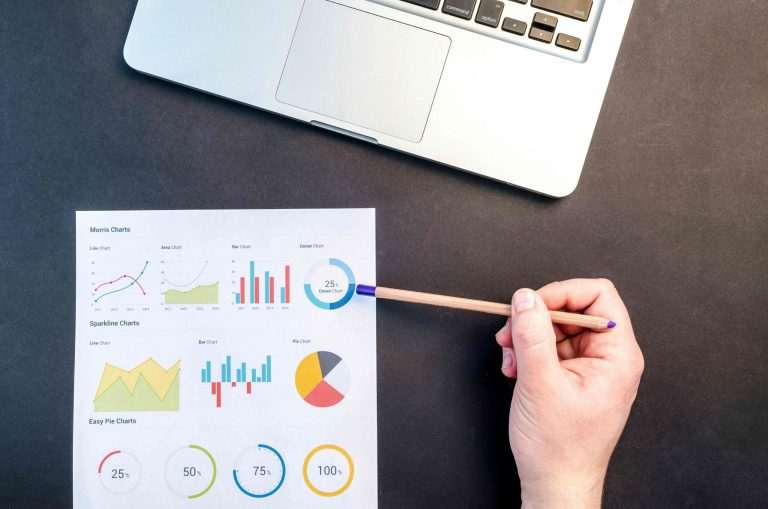What Are Bonds? The Definitive Explanation.
Table of contents
What are bonds? In our first article, we clarified a bit what investing generally means (“making your money work!”) and introduced the main types of investments: stocks, bonds, funds, and real estate. Today, we put the magnifying glass on one of these types: bonds. If the idea of “lending money” in exchange for interest intrigues you but you haven’t quite understood how it works in the world of finance, you’re in the right place! In this article, I will explain in a truly simple way how they work, and what are the key concepts to grasp quickly.
Get ready to understand this type of investment!
What Are Bonds? Bonds Are Like a Loan – But on a Large Scale!
In our first post, to explain in a super simple way what an investment is, we used the idea of “lending” your money so that it comes back to you with a gain. Well, bonds are the most direct and clear example of this concept in the world of finance!
When you buy a bond, you are literally lending a sum of money to someone.
But who is this “someone” asking for money through bonds? Mainly two types of entities:
- States (Governments): Countries need a lot of money to finance their activities: build roads, pay public salaries, manage healthcare, etc. Instead of just raising taxes, they often borrow money from the public (and other investors) by issuing bonds. For example, when you buy a BTP (a type of Italian government bond), you are lending money to the Italian state.
- Large Companies (Corporations): Companies also need funding to grow, launch new projects, buy machinery, or expand. They can ask banks for loans, or they can borrow money directly from the public by issuing corporate bonds.
So, think of bonds this way: they are “pieces of paper” (digital today, of course!) that represent a debt owed by the issuer (State or company) to the buyer (you, the investor). They commit to returning the money to you and paying you interest in the meantime.
How Bonds Work: The Key Points (Strange Names, Simple Concepts)
When you buy a bond, there are three fundamental pieces of information you should immediately look for. They have slightly technical names, but you’ll see the idea is easy:
- The Face Value (What They Will Return to You at the End): This is the original amount of the loan, the sum that the issuer (the State or company) commits to return to you at maturity. Often, for simplicity, bonds are issued with a “round” face value like 1,000 euros. Even if you buy the bond at a different price (we’ll see why that happens shortly!), in the end, unless there are serious problems with the debtor, you will be returned the Face Value.
- The Coupon (Periodic Interest): This is the “payment” you receive periodically for lending your money. It’s like the interest on your loan. The coupon is expressed as a percentage of the Face Value and is paid at established intervals (often every six months or once a year) until maturity. For example, a bond with a Face Value of €1,000 and an annual coupon of 3% will pay you €30 each year. This type of bond, where the interest percentage (coupon) is fixed, is the most common and is called a fixed-rate coupon bond. There are also bonds with coupons that change over time (variable-rate coupon) or that don’t pay periodic coupons but give you the entire gain at the end (zero-coupon bond), but the basic principle is similar: a return for your loan.
- The Maturity Date (When the Loan Ends): This is the exact date on which the loan ends. From that date, the “debtor” must return the Face Value of the bond to you. The maturity can vary greatly: from a few months to decades.
So, to summarize: you give the money (buy the bond with a certain Face Value), you receive interest “installments” every now and then (the coupons), and finally, at the Maturity Date, you are returned the initial sum (the Face Value).
What Are Bonds? Price and Yield: A Simple Example (With a Shop!)
This is a concept that can be a bit confusing at first, but it’s fundamental to understanding how the bond market works after they have been issued. Let’s talk about how the price at which you buy or sell a bond on the open market (the “used goods market”) affects its effective yield for you as the buyer.
Think of a small shop in the city center that is rented for a fixed amount: let’s say the rent is 100 euros per month (so 1,200 euros per year). This fixed amount, 1,200 euros per year, is like the fixed coupon of the bond. Whoever rents the shop always receives 1,200 euros per year from the tenant, regardless of how much the shop is worth on the market.
Now, suppose the shop itself is for sale. Its market value (the price at which you buy or sell it) can change over time for many reasons (how the economy is doing, if new shops open nearby, etc.). This value of the shop is like the market price of the bond, which goes up and down.
Let’s see what happens to your yield (how much money you earn compared to how much you spent) based on the price you pay for the shop (with the fixed annual rent of 1,200 euros):
- Case 1: You buy the shop for 12,000 euros. Your annual rent yield is: €1,200 (rent) / €12,000 (price paid) = 10%.
- Case 2: The real estate market goes up and you buy the SAME shop (which still yields 1,200 euros per year) for 15,000 euros. Your annual rent yield is: €1,200 (rent) / €15,000 (price paid) = 8%. You paid more for the same annual income, so your percentage yield has GONE DOWN.
- Case 3: The real estate market goes down and you buy the SAME shop (which still yields 1,200 euros per year) for 10,000 euros. Your annual rent yield is: €1,200 (rent) / €10,000 (price paid) = 12%. You paid less for the same annual income, so your percentage yield has GONE UP.
What to Learn from the Shop Example (and Bonds):
The rent (the bond’s coupon) is a fixed amount. But the price you pay to buy the asset (the shop or the bond) changes. Your yield is calculated by relating the fixed amount you receive (coupon/rent) to the price you paid.
That’s why there is an inverse relationship:
- If the price of the bond (or the shop) RISES, its yield (how much money you make compared to what you invested) FALLS.
- If the price of the bond (or the shop) FALLS, your yield RISES.
This concept is fundamental to understanding why the value of bonds on the market fluctuates, especially in relation to changes in general interest rates in the economy. When general rates rise, older bonds with lower coupons become less attractive, and their market price falls to offer a competitive yield; conversely, when rates fall.
What Are Bonds? The Different Types of Bonds (They Are Not All the Same!)
So far, we have talked about bonds in general, mostly thinking about those with a fixed coupon that you receive regularly. This is the most common type and the simplest to understand initially. But it’s good to know that several varieties exist!
The most important distinction, which we have already mentioned, is who issues them:
- Government Bonds: Issued by a State. Generally considered safer (although zero risk never exists!), but their yield (the coupon they offer) tends to be lower than corporate bonds, precisely because they are perceived as less risky. More “solid” States pay less to borrow money than less solid ones.
- Corporate Bonds: Issued by companies. Their risk and potential yield vary greatly depending on the company’s financial soundness. A large, stable company with solid profits will pay less interest than a startup or a company with shaky financials (which will have to offer more to convince someone to lend it money).
Besides this distinction based on who issues the debt, bonds also differ in other characteristics, for example:
- Maturity: Short-term bonds (a few years or months), medium-term (several years), or long-term (even 10, 20, 30 years or more). Maturity affects risk and yield.
- Coupon Type: There are fixed-rate coupon bonds (like in the example, where you always receive the same percentage interest), but also variable-rate coupon bonds (where the interest you receive changes over time based on a market index) or even bonds without a periodic coupon (Zero Coupon Bond, where you don’t receive interest during the life of the bond, but the entire gain is the difference between the price you pay initially – discounted from the Face Value – and the Face Value you receive at maturity).
Let’s not go into the details of all these types now, otherwise we complicate things! Suffice it to know that when talking about bonds, there is a world of variations, but the basic logic (loan, interest, repayment) remains what we have seen. We will explore the various types in future posts!
What Are Bonds? The Risks of Bonds (Yes, There Are Pitfalls Here Too)
We’ve seen that bonds are like a loan in exchange for interest and the return of the principal. It seems straightforward, right? Well, in the real world, there are always some potential hitches, and it’s right to know about them. No investment is 100% guaranteed.
The two main risks to understand immediately regarding bonds are:
- Credit Risk (or Default Risk): This is perhaps the most intuitive risk. It’s the possibility that the party who owes you money (the State or the company that issued the bond) is no longer able to pay you the interest (the coupons) or even return the principal at maturity. It happens if the issuer goes through major financial difficulties, leading to bankruptcy or default (the State that cannot pay its debts). It’s a bit like the risk that the friend you lent money to won’t give it back. Credit risk is higher for bonds issued by companies with fragile balance sheets or states with unstable economies.
- Interest Rate Risk: We saw with the shop example that the price of a bond on the market changes. And an important reason it changes is the trend of general interest rates in the economy. If rates rise after you bought your fixed-rate coupon bond, the price of that bond on the market will tend to GO DOWN (because new bonds pay more, and yours is less attractive, unless you sell it at a discounted price). This risk affects you if you plan to sell the bond BEFORE its maturity. If you hold it until the end, you will still receive the Face Value (barring credit risk!), but if you have to sell it when its market price has fallen, you might recover less than you paid for it. Conversely, if rates fall, the price of your bond rises, and you could sell it for a gain before maturity.
So, even with bonds, you have to pay attention to whom you lend money (credit risk) and consider that their value can fluctuate on the market before maturity (interest rate risk).
Bonds vs. Stocks (The Super Quick Difference)
In the first post, we put bonds and stocks side by side. Now that you understand bonds better, what is the obvious difference with stocks?
Very simple:
- When you buy a bond, you are making a loan. You are a creditor. The issuer of the bond has a debt to you and commits to repay you (with interest).
- When you buy a stock, you are becoming a partner/owner of a very small part of a company. It’s not a loan, but a share of ownership.
Generally (very generally!), bonds are considered less risky than stocks, but they also usually offer a lower potential gain. But we will talk more about this in the future!
What Are Bonds? To Summarize, What’s Next, Conclusion
Well, we’ve reached the end of this journey into the world of bonds!
What Are Bonds? The main takeaway for today is that bonds are a tool to “lend” your money to states or companies in exchange for periodic payments (the coupons) and the return of the principal at maturity. They are a way to try to make your money work with a risk/return profile that is usually different from that of stocks.
This article has given you the basics to understand what they are and how they generally work. We also mentioned that various types exist and that there are always some risks (especially that the debtor won’t pay, or that the market price will change).
The journey of Il Chiaro Finanziario continues! In the next posts, we will explore the other types of investment we saw in the initial overview: we will put the magnifying glass on stocks, then on mutual funds and ETFs, and so on. One step at a time to build your knowledge!
I hope this explanation about bonds was useful and clear. If you have any questions about the concepts we saw today (Face Value, Coupon, Maturity, Credit/Interest Rate Risk, or the shop example!), leave a comment below! I will gladly answer your doubts.
Thank you very much for reading this far. I look forward to seeing you in the next post!
See you soon on Il Chiaro Finanziario!






